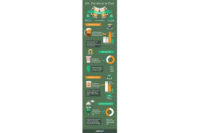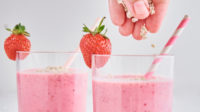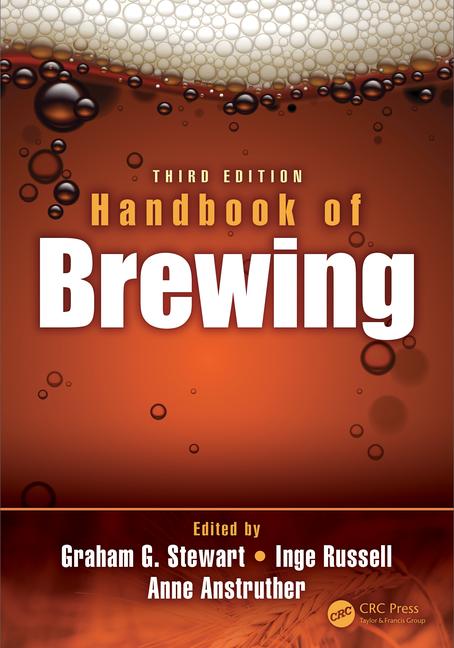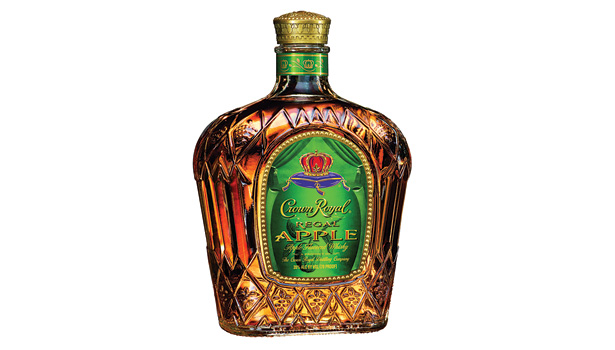Apple finds resurgence with varietal flavors
Alcohol categories helping to fuel apple's expansion

Robertet’s David Wasnak says apple flavors are popping up in a number of spirit categories including whiskey. (Image courtesy of Diageo North America)



With a call-out in a phrase like “as American as apple pie,” it is not a surprise that apple has become a staple in the American diet. However, apple’s popularity does not end with food selections. The fruit also has found a home within the beverage space.
“Americans are in love with apples,” says Mariano Gascon, senior technical director for Gold Coast Ingredients Inc., Commerce, Calif. “[This is] not only because they are rich in antioxidants, hence can help lower cholesterol and your risk of heart disease, or because they can be stored for months without losing taste or nutritional value.”
According to Beverage Industry’s 2015 New Product Development Outlook survey, 31 percent of respondents listed apple as one of their top flavors used in 2014. Additionally, 11 percent named it as one of their anticipated top-selling flavors for 2015.
Experts have a few reasons why this might be. “American consumers are moving in the direction of looking for healthy, familiar and retro-comforting flavors,” says Anton Angelich, group vice president of marketing for Virginia Dare, Brooklyn, N.Y. “Nothing can be more American and familiar than ‘apple pie.’ With such an enormous amount of choices available to the consumer, the key is that the product and flavor must taste ‘great’ to succeed and to achieve sustainability in the marketplace.”
Ingredient suppliers have noted that although new, exotic flavors have emerged in the market, apple still remains a popular choice. “In the past five years, the number of beverages with apple flavor has increased 45 percent,” says Ed McIntosh, marketing manager for Flavorchem Corp., Downers Grove, Ill., citing Chicago-based Mintel data.
McIntosh adds that apple has and will continue to be a consumer favorite and has been able to “hold its own,” despite the number of emerging exotic flavors.
Meghan Patton, associate marketing and consumer insight manager with Philadelphia-based David Michael & Co. also stresses the role apple plays in both the alcohol and non-alcohol beverage markets. “According to Mintel’s [Global New Products Database], in new beverage launches since 2013, apple is still a top flavor,” she says. “Apple ranks ninth in flavors of alcoholic and non-alcoholic beverages launched since January 2013. Although exotic and varietal flavors are emerging and being welcomed by consumers, classic fruit flavors still remain most popular in the launches of new beverages.”
Take your pick
Although apple has established itself in the U.S. beverage market, beverage-makers still are looking for ways to keep this flavor contemporary.
“I think the specific varietals have helped apple maintain its position in the market,” says Kevin W. Holland, product developer for Tree Top Inc., Selah, Wash. “Consumers are looking for more than just apple. They realize that different apples have different flavors and they like to explore those differences. We are seeing a lot of products calling out specific varietals.”
Virginia Dare’s Angelich adds that the flavor variety that comes with different apple sources will play a role in the development of new products as consumers seek more taste variety.
Other trends fueling consumer interest in apple varietals are the hyper-local and product-origin movements that call out regions of development, David Michael’s Patton explains. “Apple is not an exception to this trend,” she says. “More apple-flavored beverages are being launched with the descriptors Honey Crisp, Gala, Fuji, Northwestern, Granny Smith, etc. Varietal flavors add a more crafted, premium feel and can boost the sales of product launches in otherwise flat categories.”
No shortage of opportunities
Apple also seems to be expanding beyond its traditional beverage categories.
“While apple has always had a presence across most beverage categories, the recent splash it’s made in alcohol is what has us watching for a resurgence in non-alcoholic products,” says David Wasnak, associate director of marketing and consumer insights for Robertet Flavors – U.S., Piscataway, N.J. “In addition to the incredible rise of hard ciders, apple already is a hit in cocktails [and] has become a flavor to watch in vodka, malt beverages, whiskey, liqueurs and beer.”
Within the non-alcohol sector, David Michael’s Patton notes that flavored water, smoothies, tea and coffee beverages have been utilizing apple. However, she notes that dairy drinks have not seen as much traction.
“Apple flavors can go well in dairy applications or dairy-based smoothies, usually combined with other flavors such as cinnamon or bakery notes,” she says.
Robertet’s Wasnak adds that the energy category has been slow to embrace apple, possibly because of the fruit’s subtle flavor and its inability to mask offnotes associated with functional ingredients. However, the emergence of sour apple has worked well for the category, he says.
Paulette Lanzoff, technical director for Synergy Flavors, Wauconda, Ill., says that carbonated beverages and protein drinks also could be potential categories for very sweet apple flavors.
Complementary formulations
Although apple has established itself in its own right as a popular flavor in the beverage industry, the fruit also has found a home as a pairing with other popular and some emerging flavors.
“Apple is such a versatile flavor that it pairs well with ingredients that share similar flavor compounds, i.e., apple and sake, as well as when there is not similar flavor compound, i.e., apple and ginger,” says Mariano Gascon, senior technical director of Gold Coast Ingredients Inc., Commerce, Calif.
Paulette Lanzoff, technical director for Synergy Flavors, Wauconda, Ill., adds that apple pairs well with many other fruit flavors. “Apple has been considered a complementary flavor, i.e., cranberry apple, raspberry apple [and] grape apple,” she says. “The flavor components blend well with most other fruit flavors.”
Kevin W. Holland, product developer with Selah, Wash.-based Tree Top Inc., notes that beverage-makers are using apple in both lead and complementary flavor applications. “There has been quite a bit of pairing apple with other fruits and with some dessert and spice notes,” he says. “When used alone, the specific varietal is often called out.”
Because of apple’s versatility as a lead or complementary flavor, apple can lend itself to many blended formulations, says David Wasnak, associate director of marketing and consumer insights with Robertet Flavors – U.S., Piscataway, N.J. “In addition to the red and dark berries or fruits we often see it paired with, apple works with a number of other trendy flavors [and] spices like cinnamon and ginger, sours, and a number of indulgent flavors like caramel,” he says. “It is also one of the primary go-to flavors for fruit and vegetable juice blends and looks to be growing in hot tea blends.”
When it comes to flavored juices, apple juice often is not called out as a flavor, says Meghan Patton, associate marketing and consumer insights manager for Philadelphia-based David Michael & Co. However, when it is called out, apple can take the lead or act as a complementary component, she adds.
“The beauty of apple is that it pairs well with most fruits, herbs, spices and even sweet flavors,” Patton says. “The possibilities are endless. Some flavors [that] apple works really well with include berry, citrus, mango, pomegranate, kiwi, carrot, kale, ginger, cinnamon, nutmeg, mint, caramel and brown sugar.”
Looking for a reprint of this article?
From high-res PDFs to custom plaques, order your copy today!











